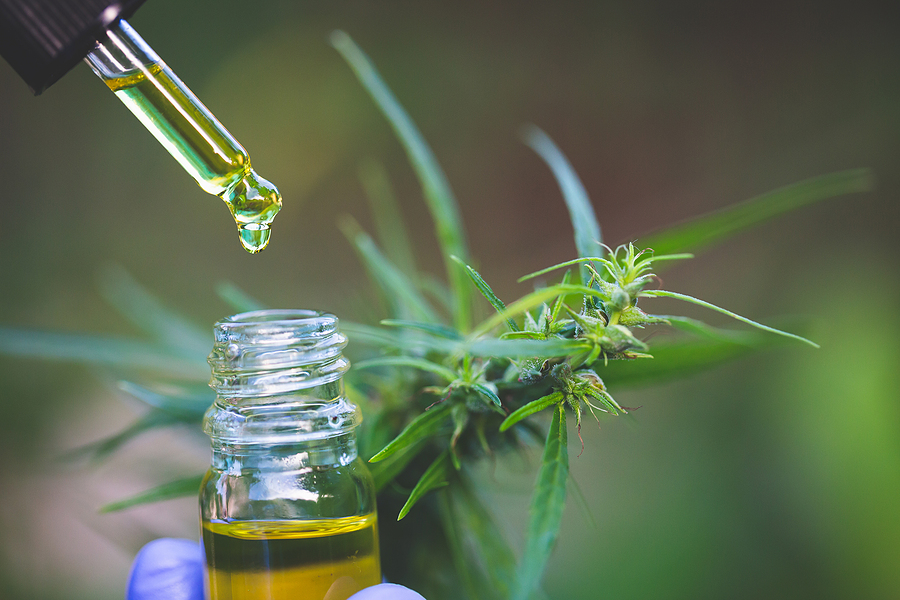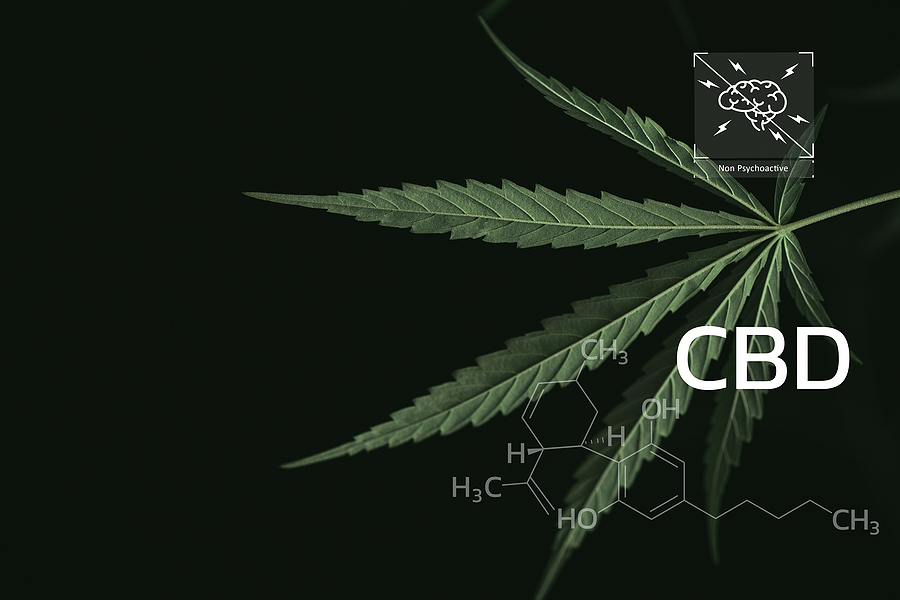Topical vs. Transdermal CBD
The therapeutic potential of Cannabidiol (CBD), a non-psychoactive component of the cannabis plant, has garnered significant interest in recent years. Among the myriad applications and formulations that have emerged, topical and transdermal CBD products are particularly noteworthy due to their distinct methods of administration and physiological effects. This dichotomy warrants an in-depth exploration to elucidate how they differ in terms of absorption, effectiveness, and overall impact on the body’s endocannabinoid system.
Topical and transdermal CBD products may appear similar at first glance; however, their mechanisms of action are fundamentally different. Topicals remain localized in the application area while transdermals permeate the skin barrier to enter systemic circulation. These differences profoundly influence their respective bioavailability, an essential factor determining the efficacy of CBD treatment.
By understanding these variations, consumers can make informed decisions about which type best suits their needs for symptom relief or general wellness enhancement. The following discussion will delve into these aspects with a focus on empirical evidence from scientific research.
- Topical CBD products are designed for localized relief of pain and inflammation and do not enter the bloodstream, while transdermal CBD products like patches or gels penetrate through all layers of skin to deliver active ingredients directly into systemic circulation.
- Topical CBD products work by interacting with cannabinoid receptors found in the skin’s surface layers, while transdermal CBD applications could be beneficial for those seeking overall wellness benefits or dealing with conditions that require a systemic response.
- Potential adverse effects should always be considered when using both topical and transdermal CBD products, and health goals and personal preferences relating to application methods and possible reactions should be taken into account when choosing between the two.
- Both topical and transdermal CBD have excellent safety profiles compared to many conventional treatments, but some people might experience skin irritation from certain carrier oils used in these products. The choice between using surface-level or deeply penetrating cannabinoid products hinges on the specific needs and desired outcomes of the individual user.
Difference Between Topical and Transdermal CBD Products: CBD Oil Users
A thorough understanding of the distinguishing factors between topical and transdermal CBD products is pivotal, as it enlightens us that while both are applied to the skin, only transdermal CBD penetrates deeply enough to enter the bloodstream and provide non-localized pain or stress relief, unlike topical solutions, which primarily target localized areas.
The fundamental difference between topical and transdermal CBD products lies in their depth of action; topical applications remain largely on the surface of the skin, where they interact with nearby cellular receptors for localized effects such as alleviating muscle soreness or inflammation.
In contrast, transdermal products, often found in forms like a transdermal CBD patch, contain special permeation enhancers that allow them to penetrate deeper layers of skin, ultimately reaching systemic circulation.
This process allows molecules from transdermal applications to be distributed throughout the body via blood circulation, which can potentially offer benefits beyond just localized relief. For instance, those seeking stress relief or assistance managing chronic ailments may find more suitable outcomes using these types of applications.
Importantly, though, due to this systemic absorption property, users must consider potential drug interactions when using transdermal CBD products. Ultimately, whether one chooses a topical product or a transdermal one depends on their individual needs; however, any use should always be done under professional guidance, considering individual health status and possible interactions with other used substances.
Topical CBD Products
Contrary to popular belief, the market offers a plethora of cannabidiol-infused products for external use, such as creams, lotions, balms, and gels, each tailored to alleviate different types of pain and address various skin conditions. These topical CBD products are designed for localized relief and provide a targeted approach by delivering cannabinoids directly to the skin.
The primary difference between these categories lies in their consistency, potency, and recommended uses.
Creams: Cannabis creams often contain a blend of essential oils alongside CBD. They have a thicker consistency compared to lotions and are typically used for providing hydration to the skin while offering potential therapeutic benefits.
Lotions: In contrast to creams, cannabis lotions have a lighter texture due to a higher water content. This product is ideal for moisturizing the skin without leaving it greasy or clogging pores.
Balms and gels: Balms offer an even denser formulation than creams or lotions, which makes them suitable for addressing localized pain points or severe dryness. On the other hand, cannabis gels tend to be cooling upon topical administration due to ingredients like menthol; hence, they may be useful in soothing discomfort from muscle strains or arthritis.
Each type of product has its own unique advantages that can cater to diverse consumer needs. However, all these topical solutions offer an alternative method of incorporating CBD into one’s wellness routine beyond oral consumption methods such as tinctures or edibles—a testament to the versatility of this hemp-derived compound. Whether you choose a cream or opt for a CBD patch depends on your personal preference as well as your specific health concerns.
Transdermal CBD Products
As we learn more about cannabidiol products that are applied to the outside of the body, transdermal products like CBD patches and Myaderm offer a unique way to deliver the drug that has a high bioavailability.
Unlike topical applications that merely affect the skin’s surface, these transdermal CBD products are engineered to penetrate through the skin’s layers and enter directly into the bloodstream. This method of transdermal delivery circumvents the digestive system, thereby preserving the integrity of CBD molecules and enhancing their therapeutic potential.
Consequently, users find substantial relief from pain associated with chronic conditions due to this efficient administration route.
Transdermal patches have emerged as an innovative solution in this category; they deliver consistent doses of CBD over extended periods, making them ideal for individuals seeking long-lasting relief from chronic pain. These patches offer a controlled release mechanism that ensures steady absorption rates, resulting in sustained effects over time.
Similarly, Myaderm utilizes advanced pharmaceutical technology to create creams capable of delivering pure CBD through the skin to reach deep tissues, further underscoring the versatility and effectiveness of transdermal administration methods within the wellness arena.
Ultimately, by leveraging the high bioavailability and direct access to systemic circulation offered by transdermal delivery systems, these CBD products present promising prospects for those seeking alternative ways to manage pain and other health-related challenges.
Why don’t topical CBD products reach the bloodstream?
Despite their prevalent use, externally applied cannabinoid products do not typically reach the bloodstream due to the molecular characteristics and absorption limitations inherent in these formulations. Topical CBD products are designed for localized relief rather than systemic distribution, meaning they deliver cannabinoids directly to the affected area without entering the blood.
Cannabidiol (CBD), a primary compound in many topical creams, is hydrophobic and lipophilic by nature. This means that it repels water but attracts fats, leading it to primarily absorb into the outer layer of the skin, where it can interact with local endocannabinoid receptors. In contrast, transdermal cannabis products are formulated specifically to enable human skin permeation and enter the bloodstream.
Increasing the CBD concentration in these topical creams poses several challenges:
The first challenge arises from CBD’s inherent hydrophobicity, which limits its solubility in water-based formulations.
Secondly, increasing CBD concentrations often results in higher production costs, which may be passed on to consumers.
Finally, while increased potency may enhance efficacy for some users, others may experience adverse reactions or diminished effects due to potential tolerance development.
Therefore, despite the known benefits of topical application, including targeted delivery of cannabinoids and reduced systemic side effects compared with oral or inhalational methods, achieving therapeutic levels of blood CBD from topicals remains a complex endeavor requiring further research and innovative formulation strategies.
Why do transdermal CBD products reach the bloodstream?
In comparison, products designed for transdermal application possess a unique composition that allows them to penetrate the skin barrier effectively and deliver CBD directly into the bloodstream. This ability is primarily due to the inclusion of permeation enhancers in their formulation. These substances assist in overcoming the hydrophobic and lipophilic nature of cannabinoids, promoting their passage through the epidermis layer of the skin.
Transdermal cannabinoids are often presented as adhesive patches or gels, specifically formulated to facilitate steady absorption over time. These cannabinoid delivery systems target blood vessels located within dermal layers, thus introducing CBD into systemic circulation. The permeation enhancers work by making temporary holes in the lipid bilayer of the skin. This lets CBD molecules move quickly into deeper layers of tissue where blood vessels are.
Once these molecules reach these vessels, they are absorbed into the blood circulation and distributed throughout the body systemically. As a result, transdermal CBD products provide more consistent dosing and longer-lasting effects compared to topical applications, which only affect localized areas without reaching blood circulation.
Should I use topical or transdermal CBD products?
The choice between using surface-level or deeply penetrating cannabinoid products hinges on the specific needs and desired outcomes of the individual user. Topical CBD products, which include creams, lotions, and salves, are designed to be applied directly to the skin for localized relief of pain and inflammation. They work by interacting with cannabinoid receptors found in the skin’s surface layers and do not enter the bloodstream.
On the other hand, transdermal CBD products like patches or gels penetrate through all layers of skin to deliver active ingredients directly into systemic circulation. These offer a more holistic approach as they can affect cellular activity throughout the body.
Differentiating ‘topical vs. transdermal CBD is critical as their routes of administration significantly influence their therapeutic effects.
For individuals suffering from localized pain or skin problems such as eczema or psoriasis, hemp-derived topical cannabinoid products may provide targeted relief without any systemic side effects.
Transdermal CBD applications could be beneficial for those seeking overall wellness benefits or dealing with conditions that require a systemic response, like chronic pain disorders or anxiety.
However, it’s important to note that while both topical and transdermal CBD have excellent safety profiles compared to many conventional treatments, potential adverse effects should always be considered. Some people might experience skin irritation from certain carrier oils used in these products.
In conclusion, whether one should use topical or transdermal CBD products depends largely on their health goals and personal preferences relating to application methods and possible reactions.
Conclusion
In conclusion, the choice between topical and transdermal CBD products is akin to selecting a key for a specific lock; it depends entirely on the desired effect.
For localized relief, topical applications may prove more beneficial given their surface-level impact and inability to permeate the bloodstream.
On the other hand, transdermal alternatives offer systemic effects due to their ability to reach the bloodstream.
This understanding underscores the importance of knowing one’s needs before choosing a product, thereby ensuring maximum benefits from CBD use.
FAQs
Transdermal products are those that are applied to the skin and then absorbed through the skin and into the bloodstream.
Cannabis topicals are intended to work locally, on the area where they are applied. Transdermal products, on the other hand, can have a whole-body effect because they are absorbed into the bloodstream.
Topical medications work by penetrating the skin and reaching the underlying tissues. They can have a range of effects, from reducing inflammation and pain to treating skin conditions.
Yes, THC can be included in transdermal CBD products. However, it is important to check the local laws and regulations as some areas prohibit the use of THC.
Transdermal products are designed to penetrate the skin and enter the bloodstream, while topicals are intended to work locally, on the area where they are applied.
The amount of CBD in transdermal patches can vary. Some patches may contain as little as 10mg of CBD, while others may contain up to 100mg of CBD or more.
Transdermal cannabidiol reduces inflammation and pain-related behaviors in rat models of arthritis by interacting with the body’s endocannabinoid system.
The bioavailability of transdermal CBD can be very high, with up to 70% or more of the CBD in transdermal products being absorbed through the skin.
Transdermal formulations may include penetration enhancers, which help the CBD molecules enter the skin. They may also include other ingredients that improve skin penetration, such as fatty acids.
Yes, many topical and transdermal products have been shown to be effective for treating a range of conditions, from pain and inflammation to skin conditions.
Resources:
Mahmoudinoodezh, Haleh, et al. “The transdermal delivery of therapeutic cannabinoids.” Pharmaceutics 14.2 (2022): 438. [HTML] mdpi.com
Scholfield, C. N., Neti Waranuch, and Chuenjid Kongkaew. “Systematic review on transdermal/topical cannabidiol trials: a reconsidered way forward.” Cannabis and Cannabinoid Research (2022).










